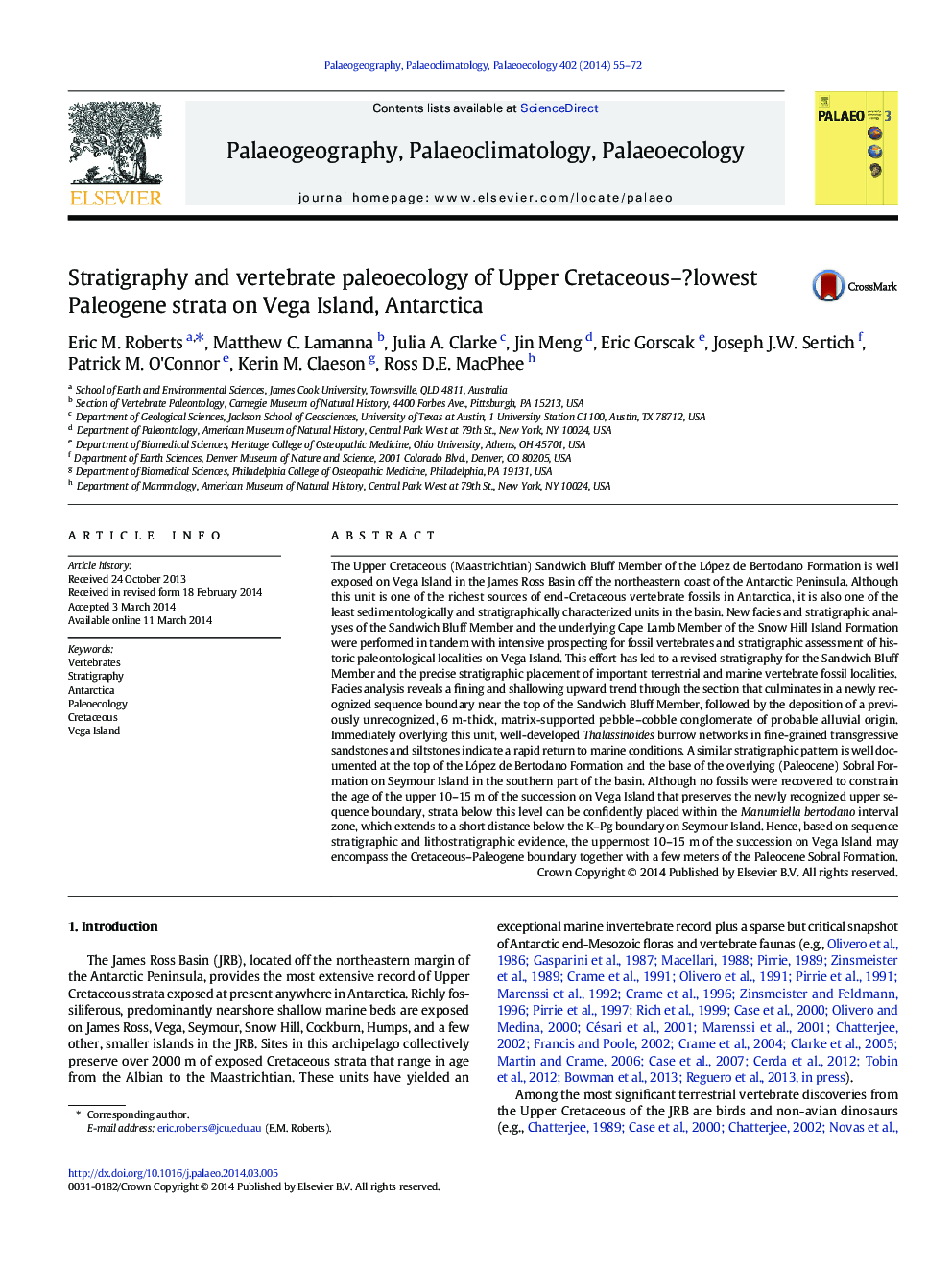| Article ID | Journal | Published Year | Pages | File Type |
|---|---|---|---|---|
| 4466263 | Palaeogeography, Palaeoclimatology, Palaeoecology | 2014 | 18 Pages |
Abstract
Facies analysis reveals a fining and shallowing upward trend through the section that culminates in a newly recognized sequence boundary near the top of the Sandwich Bluff Member, followed by the deposition of a previously unrecognized, 6Â m-thick, matrix-supported pebble-cobble conglomerate of probable alluvial origin. Immediately overlying this unit, well-developed Thalassinoides burrow networks in fine-grained transgressive sandstones and siltstones indicate a rapid return to marine conditions. A similar stratigraphic pattern is well documented at the top of the López de Bertodano Formation and the base of the overlying (Paleocene) Sobral Formation on Seymour Island in the southern part of the basin. Although no fossils were recovered to constrain the age of the upper 10-15Â m of the succession on Vega Island that preserves the newly recognized upper sequence boundary, strata below this level can be confidently placed within the Manumiella bertodano interval zone, which extends to a short distance below the K-Pg boundary on Seymour Island. Hence, based on sequence stratigraphic and lithostratigraphic evidence, the uppermost 10-15Â m of the succession on Vega Island may encompass the Cretaceous-Paleogene boundary together with a few meters of the Paleocene Sobral Formation.
Related Topics
Physical Sciences and Engineering
Earth and Planetary Sciences
Earth-Surface Processes
Authors
Eric M. Roberts, Matthew C. Lamanna, Julia A. Clarke, Jin Meng, Eric Gorscak, Joseph J.W. Sertich, Patrick M. O'Connor, Kerin M. Claeson, Ross D.E. MacPhee,
